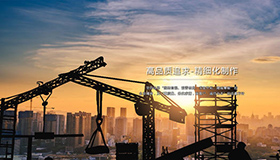Outdoor steel structure anti-corrosion and thermal insulation engineering, such as steel structure workshop, steel box girder bridge, TV Tower, building antenna, transmission station, steel pole, etc. These steel members are exposed to the atmosphere due to long-term exposure to the atmosphere and are rapidly oxidized by the surface. The formation of iron oxide layer seriously affects the strength and service life of steel structure. In order to prevent the surface oxidation of steel structure, coatings have been used in the past. The corrosion protection period is generally 3-5 years, so it needs regular maintenance. The common method is to duplicate shovel paint, which consumes a lot of manpower and material resources. The surface of the structure is sprayed with zinc and aluminum to protect it. The anti-corrosion period can be more than 30 years without maintenance. If the coating is closed in addition to the zinc aluminum coating, the corrosion protection period is longer.
After spraying zinc and aluminum on the surface of steel structure, only anode protection can be carried out, so as to achieve long-term anti-corrosion effect of steel structure. Therefore, many major projects and municipal projects in China have designated this technology. Such as: Yangtze River Three Gorges changmen, Shanghai Oriental Pearl TV Tower, Yangpu bridge main guardrail, Guangzhou inner ring viaduct steel beam, Shanghai (Shanghai related doors and windows information), securities building steel structure antenna, Pudong airport road public trench explosion gas pipeline, Shanghai South Bridge 500000 kW sub station, etc., to ensure the major project of this century.
Water corrosion resistant coating, steel gate is the main steel structure to control the water quantity of hydropower station and reservoir. Some of them are immersed in water for a long time and their surfaces are exposed to microbial attack (e.g. nail sorption and excrement are acidic). The other part is exposed to the atmosphere for a long time. In particular, the water line is partially affected by surf and floating objects on the surface of the water, as well as by high and low tides. This part of the steel structure is often alternately wet and dry, especially rusty. Now the wires are sprayed with zinc and aluminum. The process greatly improves the corrosion resistance of the steel gate, and the corrosion resistance of the original paint (the information of doors and windows related to the paint) is increased by 5-6 times.
1. Pickling and phosphating are used in the pretreatment of hot dip galvanizing process. There are acid and alkali residues on the surface of the workpiece, which may cause corrosion hazards, which makes the hot-dip galvanizing layer easy to fall off. Sand blasting process is adopted for pretreatment of zinc and aluminum spraying process. The surface of workpiece is clean and rough, and the surface is sprayed with zinc. There is no aluminum corrosion from inside to outside, and the zinc layer does not fall off.
2. The hot galvanizing process has a certain temperature, about 440 ℃, and the workpiece will deform after hot-dip galvanizing, while the temperature of zinc and aluminum spraying is very low, and the surface temperature of workpiece is less than 80 ℃, and the workpiece will not deform.
3. With the hot galvanizing process, the workpiece is limited by the length, width and height of the electroplating bath, while the zinc spraying and aluminum spraying process is not restricted.
4. The hot dip galvanizing process is adopted, but there are still some problems in the field repair. In the process of welding, welding, loading and unloading, only coating can be used to repair, thus creating a technical breakthrough. If zinc spraying or aluminum spraying is adopted, zinc spraying and aluminum spraying can be used to repair the site to avoid technological breakthrough.
5. Pickling and phosphating are used in the pretreatment of hot dip galvanizing. The surface of workpiece has no roughness and the adhesion of coating is poor. Sand blasting process is adopted for zinc and aluminum spraying pretreatment, SA ≥ 2. Grade 5, the surface roughness of workpiece is large, and the adhesion of coating is good. Tensile strength ≥ 0. 6kg/mm。
6. Hot dip galvanizing process has serious pollution to water body, and the problem of environmental protection is very prominent. As a result, hot dip galvanizing and aluminum processes are becoming more and more common. The application of steel structure surface anti-corrosion is more and more extensive.







